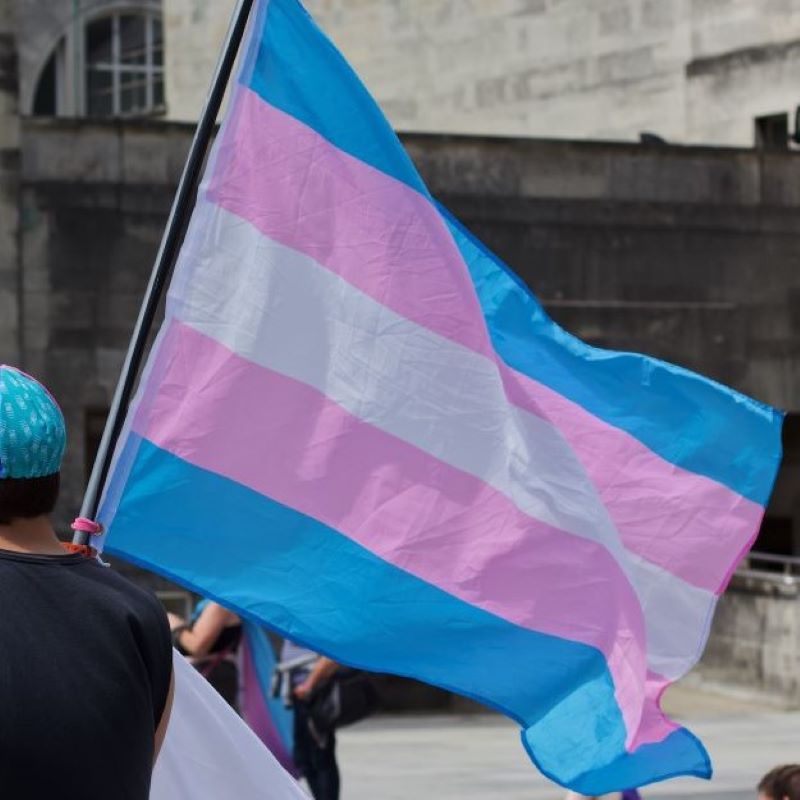By People’s Pride Southampton.
In their latest column, People’s Pride Southampton looks at the impact of transphobia on transgender people and the wider community, ahead of Trans Day of Remembrance on November 20.
In the current political landscape, a heated debate rages over the rights and protections afforded to transgender individuals. This debate often centres on concerns about potential infringements on the rights of cisgender women. However, it is crucial to recognise that this perspective overlooks the prevalent impact of transphobia, which affects not only the transgender community, but also some cisgender individuals. This column aims to shed light on how transphobia’s reach extends beyond trans people, while acknowledging that cisgender individuals still possess a form of privilege.
To provide context, “transgender” (trans) is an umbrella term encompassing individuals whose gender identity differs from the one assigned to them at birth. While it is often associated with those transitioning between male and female, it encompasses a wide spectrum of gender identities. Conversely, “cisgender” (cis) describes individuals whose gender identity aligns with their assigned gender at birth.
Transphobia, the crux of the issue, manifests in various ways, from imposing rigid expectations on how transgender individuals should appear and behave, to unfounded suggestions that trans women undermine the rights and experiences of cisgender women. One significant factor perpetuating transphobia is the concept of “heteronormativity,” which assumes that heterosexuality and cisgender identity represent the societal norm. Transgender individuals and cisgender people who do not conform to traditional gender stereotypes challenge these norms, blurring gender binaries and redefining masculinity and femininity.
Particularly, femininity faces the burden of the “Universal Womanhood” myth, dictating that femininity and the female experience are fixed and linear. Cisgender women are held to high beauty standards, while trans women, facing even greater scrutiny, must strive to “pass” as their true gender. Falling short of this goal exposes them to ridicule and harassment. However, these rising beauty standards indirectly affect cisgender individuals as well.
As society embraces androgynous and gender-defying expressions, gender lines have blurred. While liberating for many, this shift has also led to gender policing and harassment. Those who do not neatly fit into assigned gender boxes face accusations and cruelty, encompassing not only appearance but also behaviour and interests.
There are many examples of this, with a young girl being harmed and accused of being trans at their sports day because they have short hair and cis women being harassed in women’s bathrooms for not looking ‘female enough’. This even extends to the contentious topic of sports, in which trans athletes are accused of being the greatest threat to cis athletes, while it is the abuses of those in powerful positions (trainers for examples) that create the most harm and barriers to cis athletes. It is these experiences that make cis people more aware of the experiences of the trans community.
As such, the central question is, ‘what defines gender in a heteronormative society?’ The answer is frequently ‘reproduction’. Cisgender women, often evaluated based on their reproductive capabilities, occupy a unique position. This perspective remains unattainable for many trans women and some trans men, presenting significant hurdles to full recognition of their gender identity. This viewpoint also erases the experiences of cisgender women who cannot conceive or choose not to do so.
This intersection between the feminist and transgender rights movements is evident in causes like abortion rights advocacy. These movements aim to grant cisgender women autonomy over their bodies while simultaneously safeguarding the rights and autonomy of non-binary, gender-fluid, intersex, and transgender individuals.
Given the common threads of discrimination affecting various communities, collective efforts are crucial to combat transphobia.
Ultimately, protecting the transgender community protects everyone.
For more information about People’s Pride Southampton, visit their website peoplespridesouthampton.com or Facebook page facebook.com/peoplespridesouthampton
- In Common is not for profit. We rely on donations from readers to keep the site running. Could you help to support us for as little as 25p a week? Please help us to carry on offering independent grass roots media. Visit: https://www.patreon.com/incommonsoton

